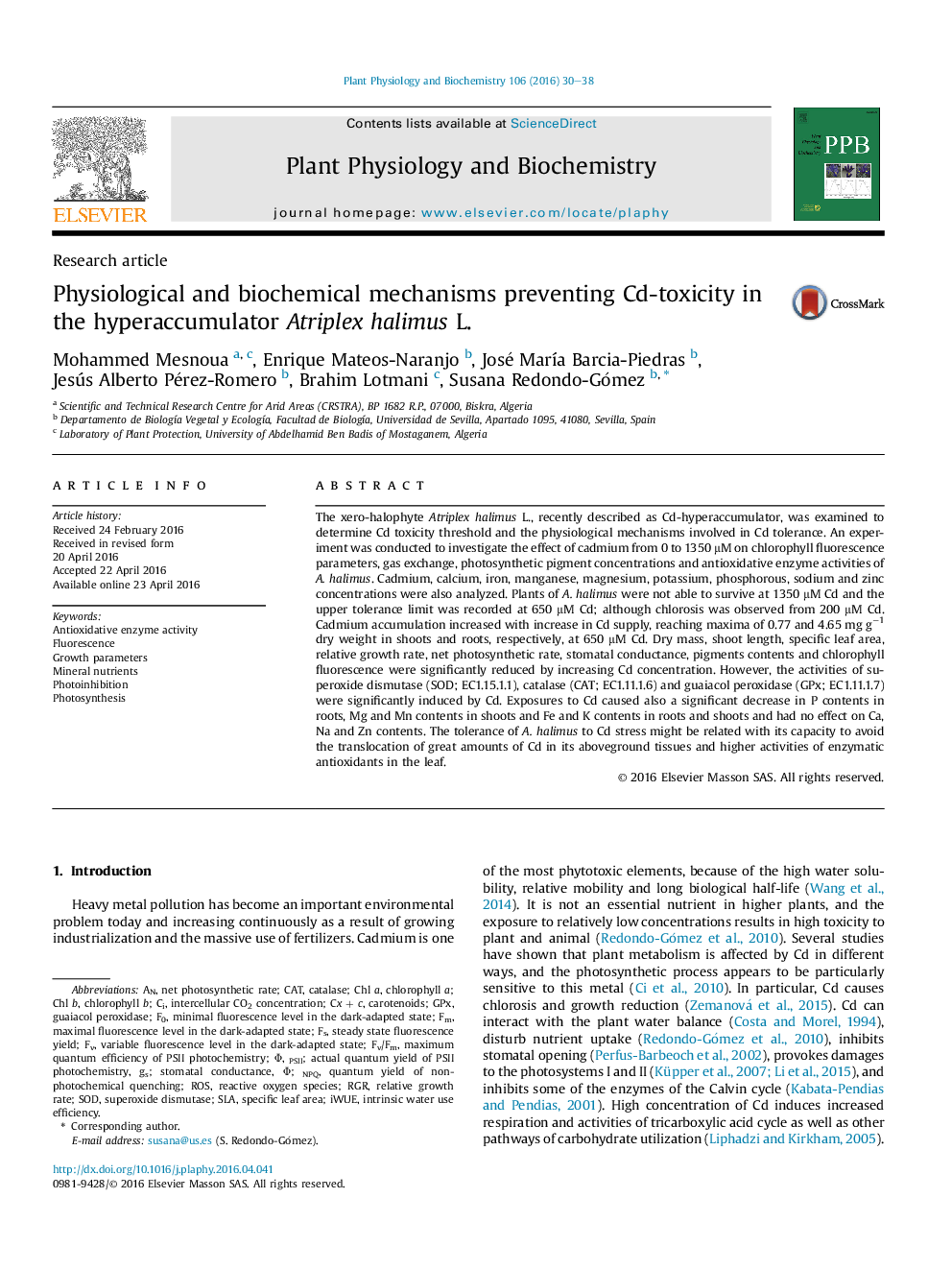| Article ID | Journal | Published Year | Pages | File Type |
|---|---|---|---|---|
| 8353843 | Plant Physiology and Biochemistry | 2016 | 9 Pages |
Abstract
The xero-halophyte Atriplex halimus L., recently described as Cd-hyperaccumulator, was examined to determine Cd toxicity threshold and the physiological mechanisms involved in Cd tolerance. An experiment was conducted to investigate the effect of cadmium from 0 to 1350 μM on chlorophyll fluorescence parameters, gas exchange, photosynthetic pigment concentrations and antioxidative enzyme activities of A. halimus. Cadmium, calcium, iron, manganese, magnesium, potassium, phosphorous, sodium and zinc concentrations were also analyzed. Plants of A. halimus were not able to survive at 1350 μM Cd and the upper tolerance limit was recorded at 650 μM Cd; although chlorosis was observed from 200 μM Cd. Cadmium accumulation increased with increase in Cd supply, reaching maxima of 0.77 and 4.65 mg gâ1 dry weight in shoots and roots, respectively, at 650 μM Cd. Dry mass, shoot length, specific leaf area, relative growth rate, net photosynthetic rate, stomatal conductance, pigments contents and chlorophyll fluorescence were significantly reduced by increasing Cd concentration. However, the activities of superoxide dismutase (SOD; EC1.15.1.1), catalase (CAT; EC1.11.1.6) and guaiacol peroxidase (GPx; EC1.11.1.7) were significantly induced by Cd. Exposures to Cd caused also a significant decrease in P contents in roots, Mg and Mn contents in shoots and Fe and K contents in roots and shoots and had no effect on Ca, Na and Zn contents. The tolerance of A. halimus to Cd stress might be related with its capacity to avoid the translocation of great amounts of Cd in its aboveground tissues and higher activities of enzymatic antioxidants in the leaf.
Keywords
iWUEsteady state fluorescence yieldAntioxidative enzyme activityNPQCATRGRCx + cChl bChl aPSIISLAGPXFv/FmROSmaximum quantum efficiency of PSII photochemistryIntrinsic water use efficiencySODSpecific leaf areaminimal fluorescence level in the dark-adapted statemaximal fluorescence level in the dark-adapted statevariable fluorescence level in the dark-adapted stateSuperoxide dismutasePhotoinhibitionintercellular CO2 concentrationPhotosynthesisFluorescenceMineral nutrientsRelative growth ratenet photosynthetic rateStomatal conductanceGrowth parametersCatalaseCarotenoidsChlorophyll achlorophyll bguaiacol peroxidaseReactive oxygen species
Related Topics
Life Sciences
Agricultural and Biological Sciences
Plant Science
Authors
Mohammed Mesnoua, Enrique Mateos-Naranjo, José MarÃa Barcia-Piedras, Jesús Alberto Pérez-Romero, Brahim Lotmani, Susana Redondo-Gómez,
